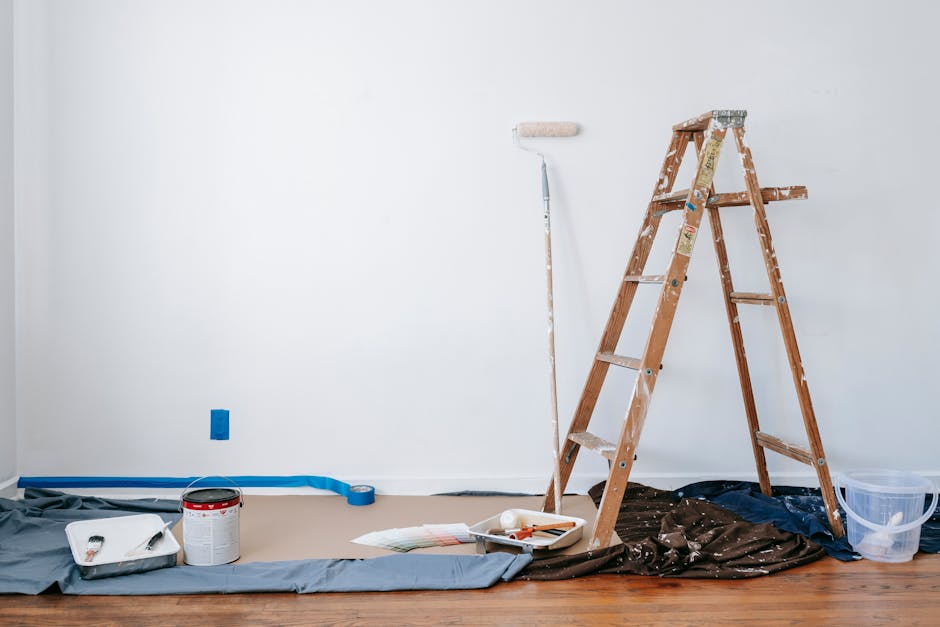Ensuring the safety of your home is a top priority for any homeowner, and one of the most critical aspects of home safety is addressing lead contamination. Lead abatement services play a vital role in eliminating or reducing lead hazards in your home, thereby safeguarding your family’s health. Lead, a toxic metal, was commonly used in paints and building materials in homes built before 1978. Exposure to lead can cause severe health issues, particularly in children and pregnant women.
Lead abatement involves a series of methods designed to permanently eliminate lead-based paint hazards. These methods include encapsulation, removal, and enclosure. By using these techniques, professionals can effectively reduce the risk of lead exposure. *Encapsulation* involves covering the lead-paint with a specialized coating, while *removal* entails the complete elimination of lead-painted surfaces. *Enclosure* involves covering the lead-painted area with a new surface, such as drywall.
It’s essential to choose a certified and experienced lead abatement service provider to ensure the job is done correctly. Proper lead abatement not only improves your home’s safety but also enhances its value and ensures compliance with health and safety regulations. At Brothers Restoration, we understand the importance of family safety, and our expert team is dedicated to treating your home as if it were our own.
Call 208 Flooded or visit our website at www.brothersresto.com to learn more about our comprehensive lead abatement services and how we can help keep your home safe.
Understanding Lead Exposure Risks

Understanding the risks associated with lead exposure is crucial for any homeowner, especially those living in older homes. Lead exposure can occur through various channels, including inhaling lead dust, ingesting lead-contaminated soil or paint chips, and drinking water that flows through lead pipes or fixtures. Even minimal exposure to lead can have severe health implications, particularly for vulnerable populations such as children and pregnant women.
In children, lead exposure can result in developmental delays, learning difficulties, irritability, and hyperactivity. High levels of lead can cause more severe issues, such as damage to the nervous system, kidney damage, and even death. For pregnant women, lead exposure can lead to complications such as premature birth, low birth weight, and developmental problems for the unborn child. Adults are not immune to the adverse effects of lead either; long-term exposure can result in high blood pressure, joint and muscle pain, and difficulties with memory or concentration.
It’s important to recognize that lead exposure is not always immediately apparent. Symptoms often develop over time and can easily be mistaken for other health issues. Therefore, proactive measures such as regular home inspections and testing for lead can be essential in preventing exposure. By being informed about the risks and taking appropriate actions, you can significantly reduce the potential health hazards associated with lead.
Addressing lead exposure risks starts with awareness and is followed by action. Identifying potential sources of lead in your home and employing professional lead abatement services can help ensure a safer living environment for you and your loved ones.
Effective Lead Abatement Methods
When it comes to mitigating the dangers of lead exposure, employing effective lead abatement methods is essential. There are several strategies that professionals use to remove or reduce lead hazards in homes. Each method has its unique advantages and is chosen based on the specific circumstances and extent of lead contamination.
Encapsulation: This method involves applying a special liquid or adhesive material to seal off lead-based paint. It prevents lead dust and paint chips from being released into the environment. Encapsulation is often a cost-effective and less intrusive option, but it’s not suitable for surfaces that experience frequent friction or impact.
Enclosure: Enclosure entails covering lead-painted surfaces with a new, lead-free material such as drywall or paneling. This method effectively isolates the lead hazards but requires precise installation to ensure all edges and joints are properly sealed.
Removal: The removal method involves physically scraping, sanding, or using heat to strip lead paint from surfaces. This is a more thorough approach but also more labor-intensive and hazardous if not done correctly. Proper protective measures and containment are crucial to prevent lead dust from spreading.
Replacement: In some cases, it may be necessary to completely remove and replace components that contain lead, such as windows, doors, or plumbing fixtures. This method guarantees that the lead source is entirely eliminated, ensuring a safer environment.
Professionals may also use a combination of these methods based on the specific needs of the property. It’s important to have a comprehensive assessment done by certified lead abatement professionals to determine the most effective approach for your home.
Choosing the right lead abatement method can make a significant difference in safeguarding your home. With the right strategy, you can minimize the risks associated with lead exposure and create a healthier living space for you and your family.
Benefits of Professional Lead Abatement

Engaging professional lead abatement services offers a multitude of benefits that extend beyond simply removing lead hazards from your home. Here are some of the key advantages:
Health Protection: Lead exposure can cause severe health issues, especially in young children and pregnant women. By hiring professionals, you ensure that lead is effectively and thoroughly removed, significantly reducing the risk of lead poisoning and its associated health problems such as cognitive impairment, developmental delays, and other serious conditions.
Compliance with Regulations: Lead abatement professionals are well-versed in local, state, and federal regulations regarding lead hazards. They ensure that all work is performed in compliance with these standards, which not only protects your health but also shields you from potential legal liabilities.
Expertise and Experience: Certified lead abatement specialists possess the necessary training and experience to identify and address lead hazards accurately. They employ industry-standard techniques and equipment to ensure that lead is removed safely and effectively, minimizing the risk of contamination during the process.
Comprehensive Solutions: Professionals provide a holistic approach to lead abatement, offering a range of services from initial assessment and testing to remediation and post-abatement verification. This ensures that all sources of lead are identified and addressed, providing peace of mind that your home is lead-safe.
Property Value Enhancement: Proper lead abatement can enhance the value of your property. Homes that have been professionally treated for lead hazards are more attractive to potential buyers and tenants, as they offer a safer living environment.
In summary, professional lead abatement services are essential for protecting health, ensuring regulatory compliance, leveraging expert knowledge, providing comprehensive solutions, and enhancing property value. Investing in professional services is a proactive step towards creating a safer, healthier home environment.
Choosing the Right Lead Abatement Service

When it comes to lead abatement services, selecting the right provider is crucial for ensuring the safety and well-being of your household. Here are some essential factors to consider when choosing a lead abatement service:
Certification and Licensing: Make sure the company you choose is certified and licensed to perform lead abatement work. Certification ensures that the professionals have undergone the necessary training and adhere to industry standards. It’s also an indication that they are knowledgeable about the latest techniques and safety protocols.
Experience and Reputation: Look for a company with a proven track record in lead abatement. Experienced providers are more likely to deliver high-quality services and handle complex situations effectively. Check reviews, ask for references, and investigate their reputation within the community to gauge their reliability.
Comprehensive Services: A good lead abatement service should offer a full range of services, including initial inspections, risk assessments, abatement planning, execution, and post-abatement verification. This ensures that every aspect of lead removal is addressed, leaving no room for oversight.
Use of Safe Practices: Lead abatement involves hazardous materials, so it’s vital to select a company that prioritizes safety. Inquire about their methods and ensure they follow strict safety protocols to protect both the workers and the residents. The use of advanced equipment and containment strategies is a positive sign.
Transparent Pricing: Cost is always a consideration, but it shouldn’t be the sole deciding factor. Seek a company that offers transparent pricing with detailed estimates. Beware of those that provide suspiciously low quotes, as this may indicate subpar services or hidden costs. A reputable company will be upfront about their fees and the scope of work involved.
By carefully evaluating these factors, you can make an informed decision and choose a lead abatement service that meets your needs and ensures a safe, lead-free environment for your home.
Maintaining a Lead-Free Home

Once you’ve successfully removed lead from your home, maintaining a lead-free environment is essential to ensure the ongoing safety and health of your family. Here are some practical steps to help you keep your home lead-free:
Regular Cleaning: Dust and dirt can contain residual lead particles. Regularly cleaning your home using a damp mop or cloth can help minimize the risk of recontamination. Pay special attention to windowsills, floors, and other surfaces where dust tends to accumulate.
Frequent Inspections: Conduct periodic inspections of your home, especially in areas where lead-based paint was previously identified. Look for any signs of peeling, chipping, or deteriorating paint, and address these issues immediately to prevent lead exposure.
Safe Renovation Practices: If you plan to undertake any home renovations or repairs, ensure that you use lead-safe practices. Hire certified professionals who are trained in lead-safe work methods to avoid disturbing any remaining lead-based materials.
Soil Management: Lead can be present in the soil around your home, particularly if it was previously contaminated with lead-based paint or other sources. Cover bare soil with grass, mulch, or other ground coverings to reduce the risk of lead exposure, especially for children who play outside.
Water Safety: Lead can leach into drinking water from old pipes and plumbing fixtures. Regularly check your water for lead content and consider using water filters that are certified to remove lead. Replacing old plumbing with lead-free materials is also a wise investment.
Nutritional Support: A well-balanced diet rich in calcium, iron, and vitamin C can help reduce the absorption of lead in the body. Ensure that your family consumes a healthy diet to support overall health and minimize the effects of any potential lead exposure.
Maintaining a lead-free home requires ongoing vigilance and proactive measures. By following these guidelines, you can create a safe and healthy living environment for your loved ones. If you ever need professional assistance or have concerns about lead in your home, don’t hesitate to call 208 Flooded or visit our website at www.brothersresto.com. At Brothers Restoration, we treat all of our customers like family and are committed to helping you maintain a safe home.



